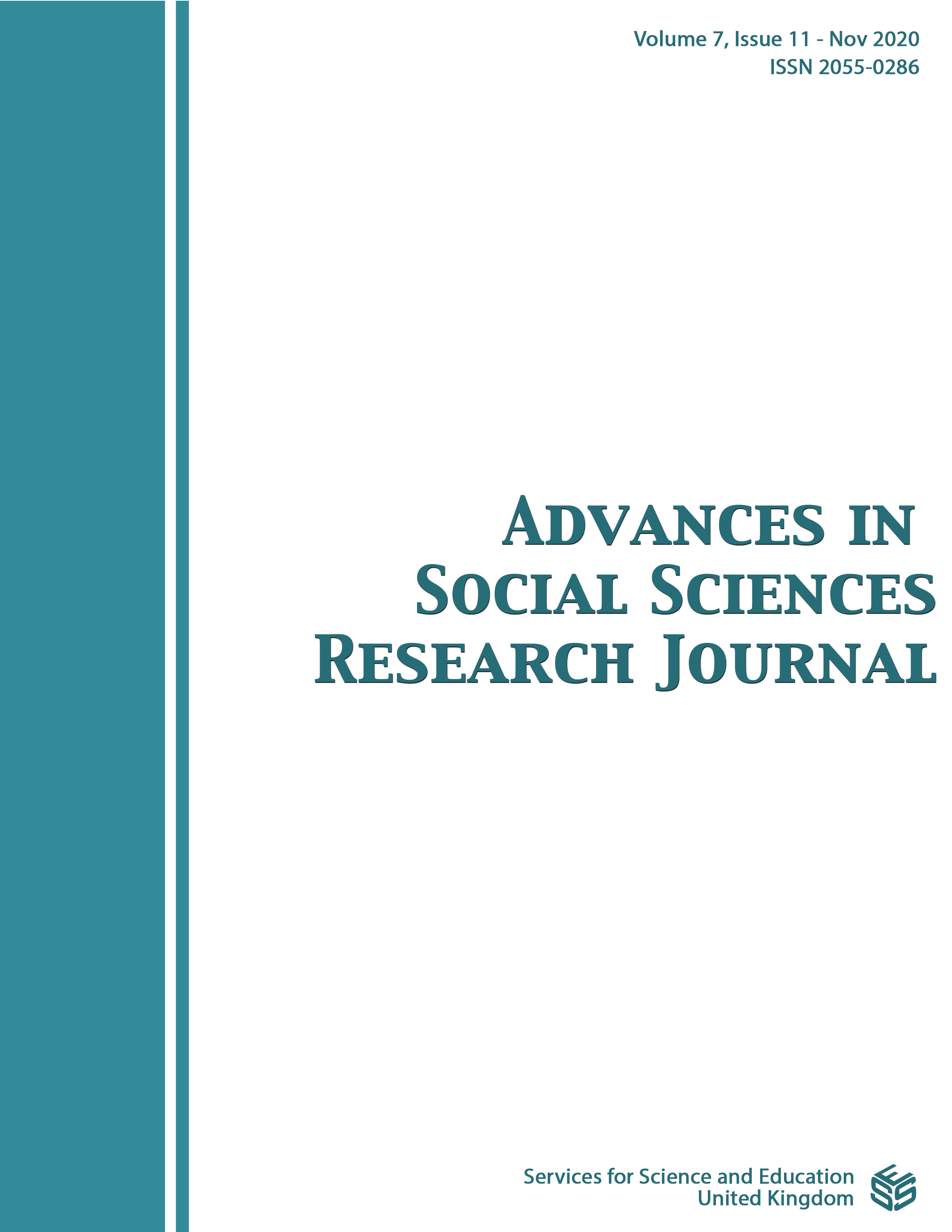The Effectiveness of Blended Learning Teaching Materials Based on Cognitive Styles to Improve Students’ Learning Outcomes in Solid State Physics Subjects
DOI:
https://doi.org/10.14738/assrj.711.9374Keywords:
distance education, learning outcomes, blended learning, cognitive stylesAbstract
The industrial revolution 4.0 forces various sectors, including the education sector, to face rapid technological innovation changes. Universitas Terbuka, as a distance learning activity management system, has made information and communication technology a fundamental requirement for implementing learning activities at UT or PTJJ. Blended learning emerges as an effective strategy that can combine the advantages of online education or technology-based learning and face-to-face learning. This study aimed to analyze the effectiveness of blended learning teaching materials based on cognitive styles to improve students’ learning outcomes in solid-state physics subjects. This research is quasi-experimental research conducted in 3 Universitas Terbuka; those are Universitas Terbuka of Surabaya, Malang, and Jember. In this study, Respondents were 11 students who were treated with blended learning teaching materials in solids state physics subjects. The data obtained are in the form of students’ learning outcomes, which are then analyzed using the N-gain test. Based on the N-gain test, the test result was accepted that the average N-gain of students was categorized as medium and high. In addition to learning outcomes, data on student responses, and learning activities were also obtained using blended learning teaching materials in solids state physics subjects. The majority of students respond to learning activities with a positive response, and students actively participate in all the learning activities provided. This study implies that blended learning materials based on cognitive styles effectively improve students’ learning outcomes in solid-state physics subjects.
References
Broadbent, J. (2017). Comparing online and blended learner's self-regulated learning strategies and academic performance. The Internet and Higher Education, 33(1), 24-32.
Brunyé, T. T., Mahoney, C. R., Giles, G. E., Rapp, D. N., Taylor, H. A., & Kanarek, R. B. (2013). Learning to relax: Evaluating four brief interventions for overcoming the negative emotions accompanying math anxiety. Learning and Individual Differences, 27(3), 1-7.
Buckley, Jessica Belue, dan Jessica Ostrow Michel. (2020). An Examination of Higher Education Institutional Level Learning Outcomes. Innovative Higher Education 45(1), 201–217.
Clark, Ruth Colvin dan Richard E. Meyer. (2016). E-Learning and the Science of Instruction. Canada: John Wiley & Sons, Inc.
Ebrahimi, A., Zeynali, S., & Dodman, d. K. (2013). The Effect of Field Dependence\Independence Cognitive Style on Deductive/Inductive Grammar Teaching. International Journal of Academic Research in Progressive Education and Development, 2-3.
Garrison, D. R., & Kanuka, H. (2004). Blended learning: Uncovering its transformative potential in higher education. Internet and Higher Education, 7(4), 95–105.
Graham, C. R. (2006). Blended learning systems: Definition, current trends and future directions. In C. J. Bonk & C. R. Graham (Eds.), The handbook of blended learning: Global perspectives, local designs (pp. 3–21). San Francisco: Pfeiffer.
Guisande, M. A., Páramo, M. F., Tinajero, C., & Almeida, a. L. (2007). Field dependence-independence (FDI) cognitive style: An analysis of attentional functioning. Psicothema, 2-3.
Koc-Januchta, et al. (2017). Visualizers versus verbalizers: Effects of cognitive style on learning with texts and pictures e An eye-tracking study. Computers in Human Behavior, 68 (1), 170-179.
Lucas, P., & Froehlich, d. (2003). Cognitive Styles: A Review of the Major Theories and Their Application to Information Seeking in Virtual Environments. Information Science, 2-3.
Nguyen, H. T., Duong, P. H., & Cambria, E. (2019). Learning short-text semantic similarity with word embeddings and external knowledge sources. Knowledge-Based Systems, 182, 104842.
Nuraini, S., Distrik, I. W., & Suana, W. 2018. Pengembangan Lembar Kerja Siswa Blended Learning Berorientasi Higher Order Thinking Skilss. PASCAL (Journal of Physics and Science Learning), 2(1), 69–77.
Nurdyansyah dan Nahdliyah Mutala’liah. (2018). Pengembangan Bahan Ajar Modul Ilmu Pengetahuan Alambagi Siswa Kelas Iv Sekolah Dasar. Universitas Muhammadiyah Sidoarjo.
Nugraha, M. G., & Awalliyah, d. S. (2016). Analisis Gaya Kognitif Field Dependent dan Field Independent terhadap Penguasaan Konsep Fisika Siswa Kelas VII. Prosiding Seminar Nasional Fisika (E-Journal) SNF2016, 2.
Putri, Nofitria Eka, Herman Nirwana, dan Syahniar. (2018). Hubungan kondisi lingkungan keluarga dengan hasil belajar siswa sekolah menengah atas. Jurnal Penelitian Guru Indonesia, 3(2), 98-102.
Rafiola, et al. (2020). The Effect of Learning Motivation, Self-Efficacy, and Blended Learning on Students’ Achievement in The Industrial Revolution 4.0. International Journal of Emerging Technologies in Learning, 15(8), 71-82.
Sulfemi, Wahyu Bagja & Dede Supriadi. (2018). Pengaruh Kemampuan Pedagogik Guru dengan Hasil Belajar IPS. EDUTECNO : Jurnal Pendidikan Dan Administrasi Pendidikan, 18 (2).
Susanto, H. A. (2008). Mahasiswa Field Independent dan Field Dependent Dalam Memahami Konsep Grup. Semnas Matematika dan Pendidikan Matematika, 6-7.
Wasserman, Jack, et al. (2009). Activity Design Handbook. United States of America: Pacific Crest.
Wicaksono, I., Madlazim, & Wasis, W. (2017). The effectiveness of virtual science teaching model (VS-TM) to improve student’s scientific creativity and concept mastery on senior high school physics subject. Journal of Baltic Science Education, 16(4), 549-561.
Widiyana, I Wayan, Gede Wira Bayu, dan I Nyoman Laba Jayata. (2017). Pembelajaran Berbasis Otak (Brain Based Learning), Gaya Kognitif Kemampuan Berpikir Kreatif dan Hasil Belajar Mahasiswa. Jurnal Pendidikan Indonesia, 6(1), 1-15.
Downloads
Published
How to Cite
Issue
Section
License
Authors wishing to include figures, tables, or text passages that have already been published elsewhere are required to obtain permission from the copyright owner(s) for both the print and online format and to include evidence that such permission has been granted when submitting their papers. Any material received without such evidence will be assumed to originate from the authors.






